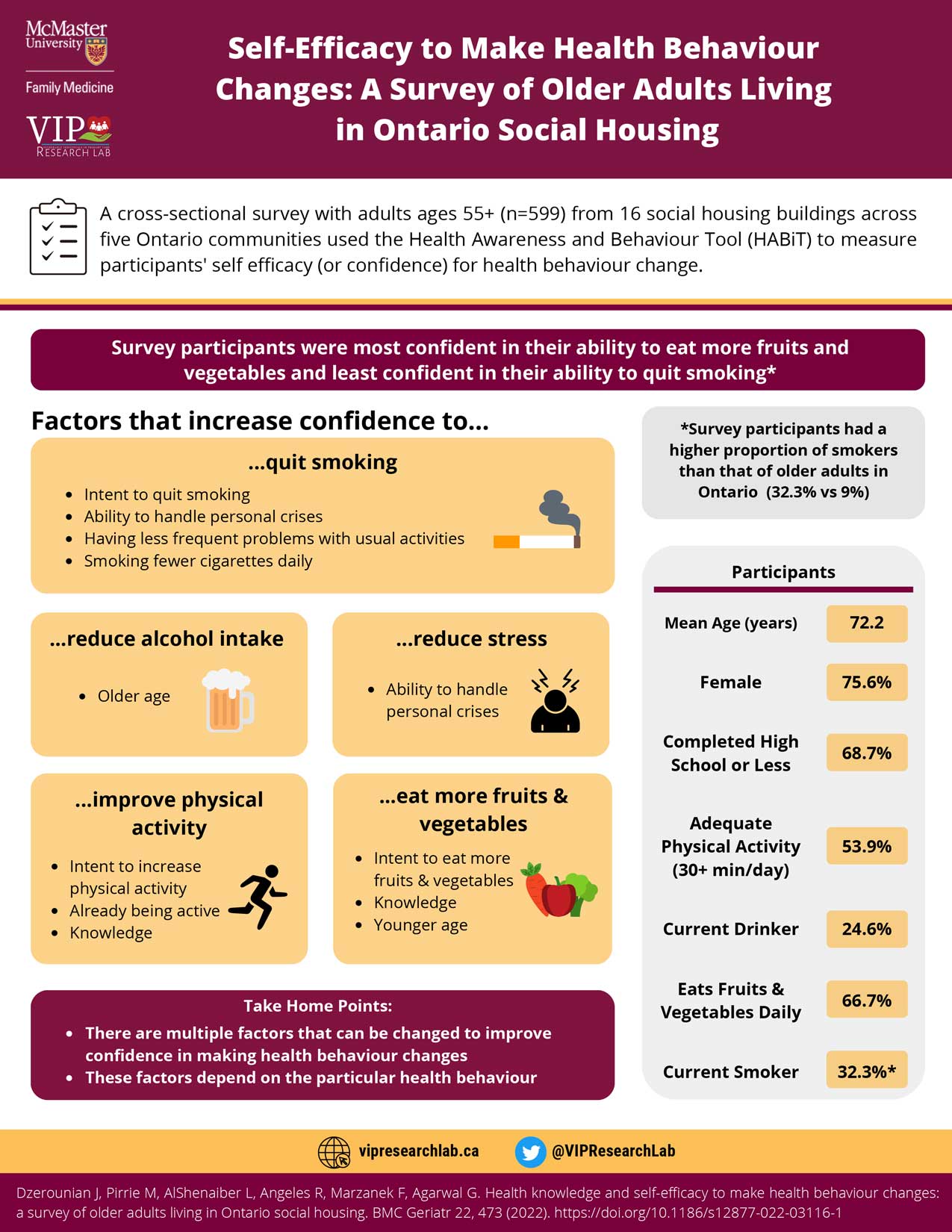
The infographic is titled Self-Efficacy to Make Health Behaviour Changes: A Survey of Older Adults Living in Ontario Social Housing. The study conducted a cross-sectional survey with a sample size of 599 with adults ages 55 plus from 16 social housing buildings across five Ontario communities used the Health Awareness and Behaviour Tool (HABiT) to measure participants’ self efficacy (or confidence) for health behaviour change. The infographic highlights that survey participants were most confident in their ability to eat more fruits and vegetables and least confident in their ability to quit smoking. There is a note that states that the survey participants had a higher proportion of smokers than that of older adults in Ontario (32.3 percent versus 9 percent). Factors that were found to increase confidence in quitting smoking included intent to quit smoking, ability to handle personal crises, having less frequent problems with usual activities, and smoking fewer cigarettes daily. A factor that was found to increase confidence in reducing alcohol intake is older age. A factor that was found to increase confidence in reducing stress is the ability to handle personal crises. Factors that increase confidence to improve physical activity are intent to increase physical activity, already being active, and knowledge. Finally, factors that increase confidence to eat more fruits and vegetables are intent to eat more fruits and vegetables, knowledge, and younger age. Demographic information about the survey participants is also presented. The mean age is 72.2 years, 74.6 percent are female and 68.7 percent have completed high school or less. 53.9 percent had adequate physical activity or 30 plus minutes per day, 24.6 percent are current drinkers, 66.7% eat fruits and vegetables daily, and 32.3 percent are current smokers. A bar at the bottom of the infographic summarizes the key takeaways, emphasizing the multiple factors that can be changed to improve confidence in making health behaviour changes and that these factors depend on the particular health behaviours.
